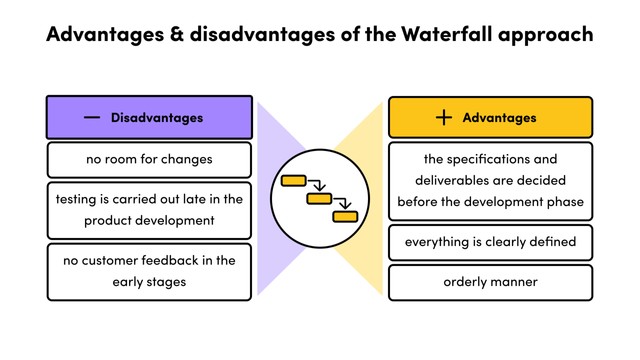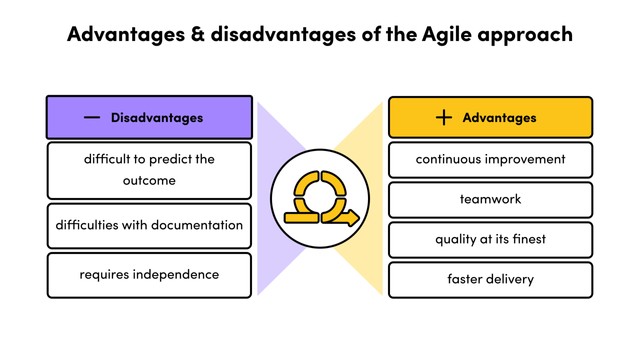

Building a digital product isn’t a piece of cake. It’s the process, the technologies, and tools but, most of all, the people. Because in the end, it’s the software development team that gives life to an idea and turns it into a fully functional product, ready for the market. As said in the Agile Manifesto, individuals and interactions stand above processes and tools. And it’s becoming the truth.
Why? Because even though we’re living in the digital age, soft skills are becoming more and more important, regardless of the industry.
What are the 3 types of software development team structure? How do project management approaches influence the team structure? And lastly, what are the roles and responsibilities of the agile software team vs the traditional team? Let’s get right into it.
3 types of software development team structure
Before you know which projects to prioritize when creating software teams, you must decide what type of organizational structure to have. A successful software project will depend upon establishing a strong team.
So when looking at software development team arrangements, we can differentiate 3 kinds of them:
- Generalist team structure – in this kind of team, we have people with broad skill sets and expertise. Every team member has a good understanding of the solution since they usually are present from the beginning of the cooperation. Hence, such a team can develop a suitable solution that will improve the product even more. Usually, they’re responsible for the e2e development of a solution.
- Specialist team structure– here, we’re talking about the people with individual expert-skill. In other words, each software development team member is responsible for their own thing.
- Hybrid team structure – the best of both worlds. The hybrid teams work on a project as a whole, but each member can narrow their focus to their area of expertise. It’s the most effective approach as it combines cross-functional software development teams with experts in the area.
Now you may ask – which structure should I choose? Well, before you make the decision, consider these 3 factors:
- project complexity,
- deadline,
- budget.
In other words, how big is your project because complex projects tend to need deep expertise and a less generic approach. How soon the project needs to be delivered is also crucial. The same goes with budget – this is when certain limitations kick in, including the number of specialists or their experience. Thinking about these 3 points will help you determine which team structure will fit best for your project.


Have a project in mind?
Let’s meet - book a free consultation and we’ll get back to you within 24 hrs.
Project management approaches & how they influence the team structure
Here, let me illustrate this difference with the most obvious example – Waterfall vs Agile.
Waterfall
It’s more of a traditional project management framework that’s based on chronology and order (detailed documentation, orderly manner of tasks, fixed budget). It’s simple and rather easy to implement in product development. However, there’s not much room for flexibility.
Agile
Based on the Agile Manifesto from 2001, this group of methodologies (like Scrum) is about building the product in smaller iterations, with constant feedback from the software development team and users to ensure that everything aligns with the key objectives and market needs.
In agile project management, you can also apply the principles of lean development that help to scale agile practices across large or growing organizations. Lastly, due to its iterative nature, there’s no problem altering requirements during the project.
From these two simple descriptions, we can see how the team structure and hierarchy varies depending on the project management approach. But the biggest difference is in team cooperation. While Waterfall is based on hierarchical dependency, Agile teams are about self-management and autonomy.
Agile software team vs traditional software development team structure
Once we know how different approaches impact software development team structure, it’s time to think about the distinction between agile teams and traditional teams.
From this simple distinction, we may observe that the agile software development teams are more independent and flexible. There is a certain freedom and a sense of teamwork since the team is evaluated as a whole.
On the other hand, traditional teams are more bureaucratic and hierarchical; team members are accountable for their own thing. And for that reason, they can work on more projects simultaneously as opposed to the agile team that works on one project at a time.
In short, there is no right or wrong here. It’s all about the team’s preferences and the specifications of the software development process.
Roles and responsibilities in the agile software team
Of course, the agile software development process is vast, and thus, there are many positions like business analyst or tester that are not mentioned here. Take a closer look at our basic/ typical agile team structure – their roles and responsibilities.
Product Owner
In an agile development team, this is the person that represents the stakeholders as well as the target audience. POs understand the needs and requirements of the users. They also have wide knowledge concerning the solution itself.
PO makes sure that the team delivers the most value with the solution. Their area of expertise is the product backlog, stakeholder management, and release management.
Scrum Master
Scrum Master’s role is about holding everything together. In practice, it means that they help POs define the value, promote transparency and self-organization within the team and facilitate delivering the real value to the users. They also ensure that the Scrum environment is preserved along with its principles and values.
UX/UI Designer
Product designers ensure a smooth and user-friendly experience. They’re responsible for how the solutions look and feel – not only in terms of the user interface but also user flow and features within the app. UX/UI designers closely collaborate with the frontend developers.
Developers (frontend & backend)
While frontend developers are responsible for building the part of the app that the user sees and interacts with, the backend developers work behind the scenes to make sure that the product works properly.
Also, developers are responsible for quality assurance as well as tests. They’re carrying out the quality assurance actions to ensure the quality of the digital solution throughout the project.
At Gorrion, skills matter more than titles. That’s why the cross-functional team usually consists of:
- Product Manager/Product Owner – their goal is the team and project management, backlog prioritization, budget, documentation, and more. Usually, they’re also the clients’ first contact facilitating transparent communication and feedback culture.
- Dev team
- UX/UI Designer – is responsible for the product design process as well as research, usability tests, and more.
- Software developers (Frontend/Backend/Full stack) – these software engineers are using cut-edge technologies to develop the product that will bring value to the market. But that’s not their only job as they also act as software architects and take care of software quality through tests in various environments.
- Scrum Master – these are the ones who ensure that the team follows the Scrum rules and practices as well as assist the team and PM/PO in any way they can (encouraging the dev team to self-organize, helping PO with product backlog by suggesting useful techniques, and more.)
But as it is with anything in software development, the agile team structure changes depending on the project’s size, the client’s budget as well as the business model or technologies involved.
CTO’s tips 💡
How to choose the right software development team?
As we’re coming to the end of this article, let me give you a few tips on how to choose the right team for your project.
- Stay flexible – don’t be afraid to iterate because this is what the agile process is all about. Also, create a universal environment for the team members to feel good and openly share their issues with the project to which you can provide suitable solutions.
- Pay attention to soft skills – as I said before, interpersonal skills are crucial nowadays, so make sure to focus on this as well. Nor only on experience and technical skills.
- Be transparent – in other words, clearly communicate the project goals and never miss out on giving feedback.
Or maybe you’re looking to outsource a software dev team? We got you! Here’s a 3-step plan for choosing the right software development company.
All things considered
As you can see, there are many factors to the product team in agile software development. The roles and responsibilities also differ depending on the type of software development team structure.
Looking for a software development team for your next project? Reach out to us, and let’s turn your idea into reality!


Have a project in mind?
Let’s meet - book a free consultation and we’ll get back to you within 24 hrs.
Ela writes about the fundamentals of great development, project management approaches, ways to develop a proof of concept or an MVP, UX, our company culture, and many other things happening in Gorrion.






